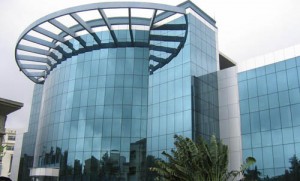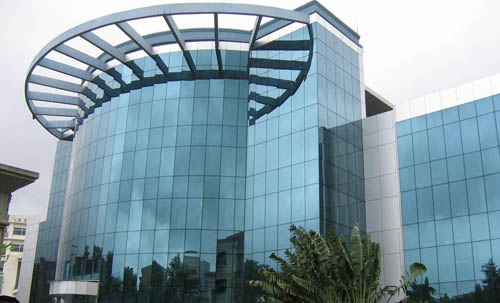 India emerged as the second most risk ridden Data Centre Location among the top 30 countries in a study conducted by Cushman & Wakefield and hurleypalmerflatt. The pioneering study ‘Data Centre Risk Index’ evaluated the risks to global data centre facilities and international investment in business critical IT infrastructure.
India emerged as the second most risk ridden Data Centre Location among the top 30 countries in a study conducted by Cushman & Wakefield and hurleypalmerflatt. The pioneering study ‘Data Centre Risk Index’ evaluated the risks to global data centre facilities and international investment in business critical IT infrastructure.
India has been at the centre of global outsourcing over the last few years driven by low cost mass IT processes which in turn have been backed by a range of data centres located in strategic cities such as Bangalore, Mumbai, Pune etc. Main parameters that looked to be deterrents to the attractiveness of the country and on which India scored the lowest were ‘Ease of Business’, ‘Inflation’, ‘GDP per Capita’ and ‘Corporation Tax’. India however ranked high on the parameters of ‘cost of labour’ and ‘sustainability’, which have been India’s advantages over the last two decades. Criteria such as Quality of power and outages represents a challenge in India which is often exacerbated by increasing IT loads.
Arvind Nandan, Executive Director, Consultancy, India Cushman & Wakefield says, “India and key Asian economies remain preferred locations for DCs and have witnessed a growth in demand owing to various advantages. India offers the advantages of cost benefits and sustainability of operations. We would expect the growth to continue as this is also coupled with a rising domestic demand for IT services where internet and mobile communication penetration is still moderate. Investment by overseas players continues showing confidence in the future potential of India. At the same time it is important to put in place various take initiatives for in developing other areas such as energy, bandwidth, improving business environment, data protection laws, etc., which can enhance the proposition for India”
More companies are looking to locate their data centres in the Nordic countries as they opt for renewable energy and carbon neutrality. Data centres account for a growing share of the carbon pollution associated with the IT industry. With the move to cloud computing, IT companies are spending more money on new space for data centres. Recently there has been criticism of several large technology companies for their alleged reliance on highly polluting coal to power their data centres.
Sustainability continues to grow in importance amongst companies. Yet the availability of renewable energy at an affordable cost is becoming more of a challenge. As a result, the Scandinavian countries are an increasingly attractive prospect. The colder climate allows improved free cooling or at worst, reduced mechanical cooling, and there is access to almost limitless supplies of hyrdo power or alternative renewable energy, with comparatively inexpensive rates.
Data centres house business-critical information technology systems. Any downtime has the potential to cost millions in lost revenue and threaten the viability of an organisation. The Data Centre Risk Index 2012 report evaluates risks to global data centre facilities, helping companies make informed investment decisions about where to locate their data centres, to increase their efficiency and lower costs.
The index ranks countries according to the risks likely to affect the successful operation of a data centre, risk factors such as energy costs, connectivity, and the likelihood of natural disasters or political instability. Building on the inaugural report last year and reflecting the ever-changing technological and political landscape, ten new countries and two risk categories – energy security and education – have been included. The risk factors are individually weighted to reflect the different risk levels and are arranged under a three tiered system, tier 1 being the most important and comprising risk factors – energy costs, international internet bandwidth capacity and ease of doing business.
The U.S. retains its first place ranking and is considered the lowest risk location for building and operating a data centre in the world. It holds top position for international bandwidth and performs well in the other tier 1 risk categories. It also has the largest percentage of its population completing tertiary education.
The UK secured the second position largely driven by its high international internet bandwidth capacity and ease of doing business put it above all other European locations. Germany and Canada remain in the top five low risk locations.
Hong Kong has maintained its position as the location with the least risk in Asia, and ranks seventh. Republic of Korea (South Korea) was the second most attractive location in Asia, ranking at 13th position. The other major global outsourcing location China
Keith Inglis, partner in the EMEA Data Centre Advisory Group at Cushman & Wakefield, said: “What we are seeing, certainly in the data storage market, is the rise of the Nordics, which may in the future dilute the market share from the traditional centres in Europe. Google has built a facility in Hamina, Finland and Facebook is constructing a substantial new data center in Lulea, Sweden. The cool climate is ideal for free cooling technologies and the abundance of renewable power and water make this region an increasingly attractive option. Iceland, ranked fourth is a new entrant to our Index and is the highest ranked of the Nordic counties.”
Stephen Whatling, Global Service Director at hurleypalmerflatt, said, “Indonesia, India and Brazil are all considered growth markets, but with barriers to entry, regulated markets and high energy costs they do score poorly relative to the more established economic markets. Connectivity is also a problem but as these markets continue to be invested in and the infrastructure becomes more developed we would expect them to rise up the rankings.”





